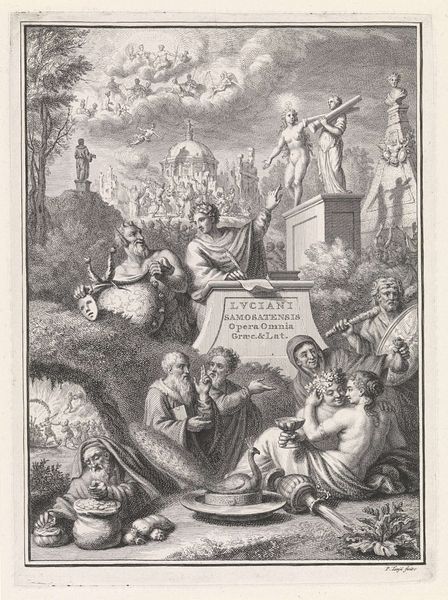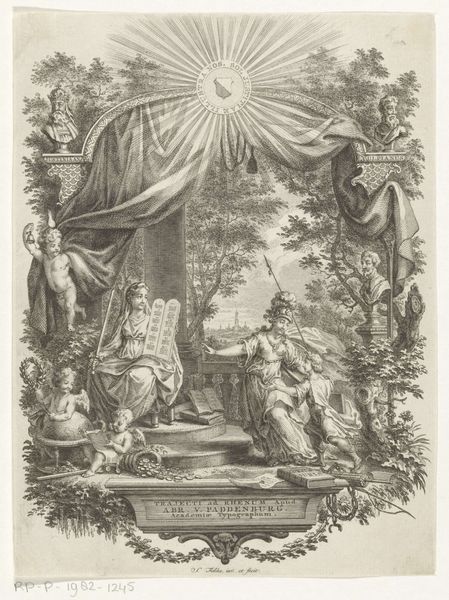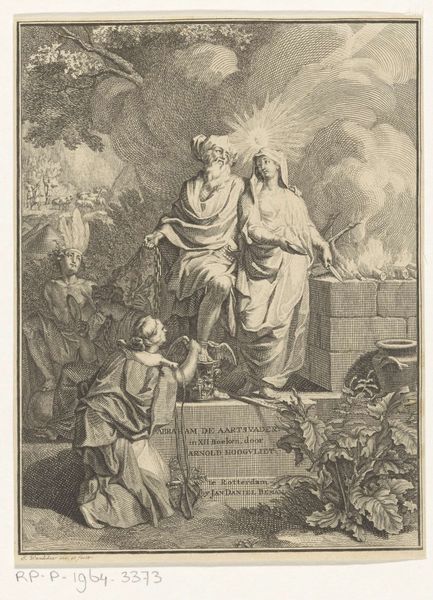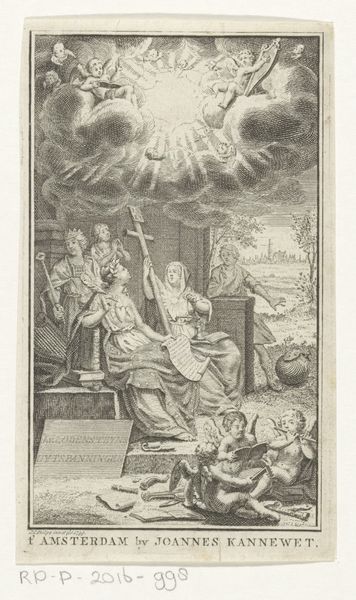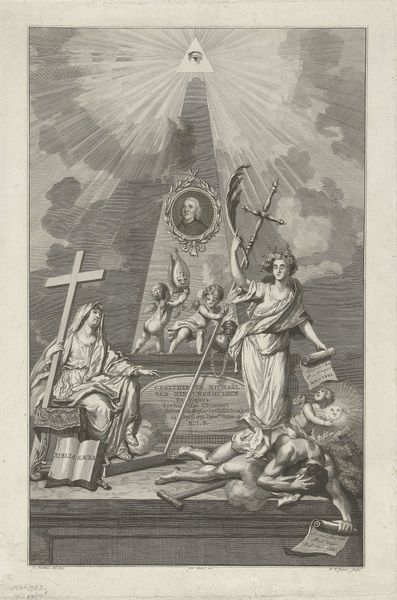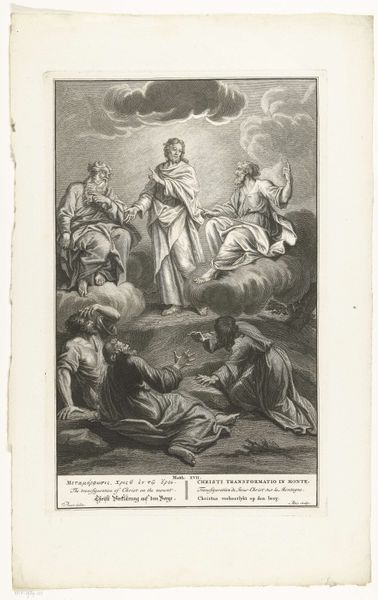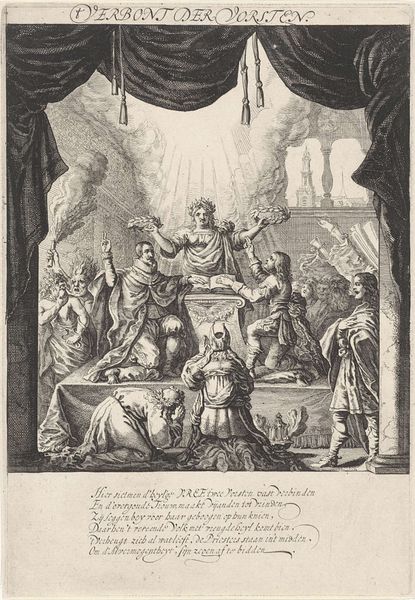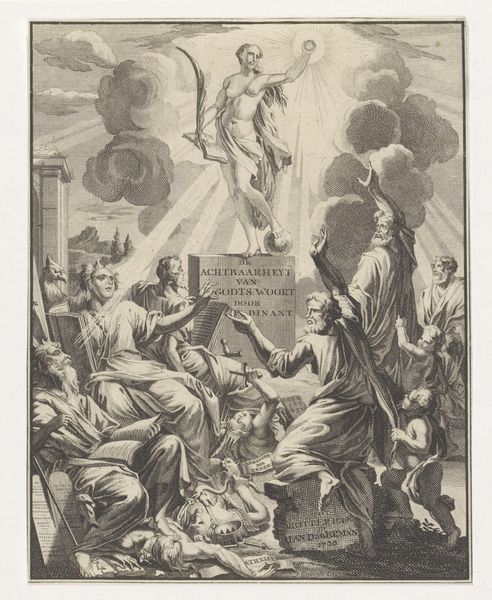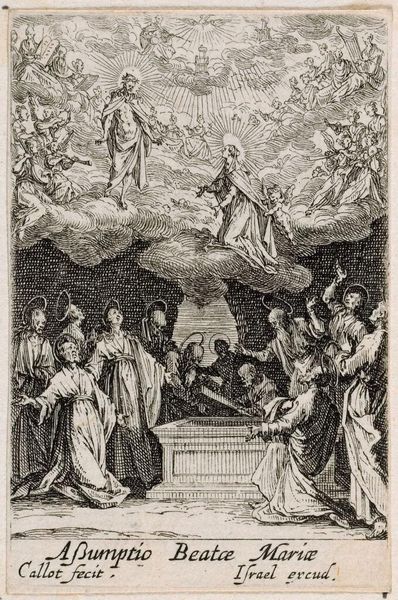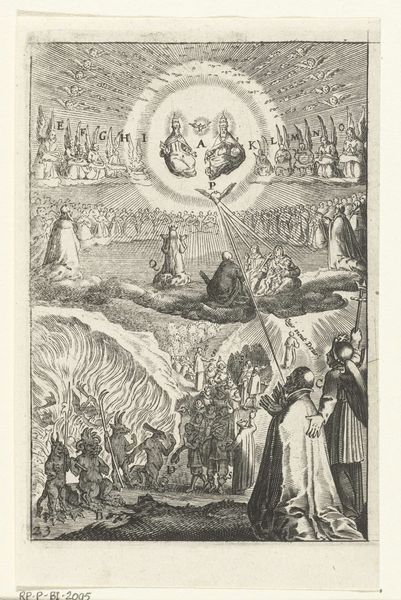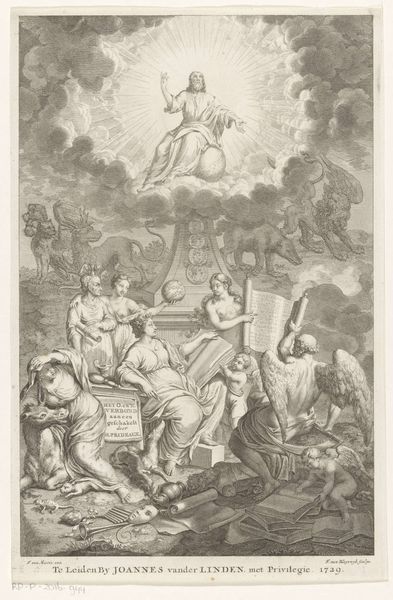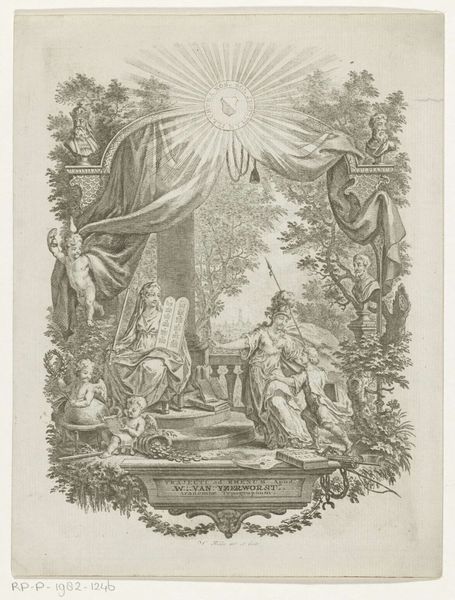
print, engraving
#
neoclacissism
#
allegory
# print
#
old engraving style
#
personal sketchbook
#
history-painting
#
engraving
Dimensions: height 320 mm, width 242 mm
Copyright: Rijks Museum: Open Domain
Curator: What an atmosphere. The artist, Hermanus van Brussel, rendered this scene commemorating Wilhelmus Somveen, sometime before 1804, through the precise and detailed work of engraving. It is, on the surface, rather conventional... but there is something captivating here. Editor: Captivating indeed, although heavy, wouldn’t you say? All this mourning captured in monochrome. And look at that pyramid monument reaching upwards. What do you see? Curator: Well, immediately, the monument symbolizes lasting remembrance. We’ve seen pyramids used since ancient times as a way to preserve the memory of pharaohs. Here, topped by what appears to be a draped shroud, it suggests a solemn parting. Also, consider the figures, the angel-like cherubs floating above in glory... They’re like tiny balloons lifting the departed soul up. Editor: The symbolism runs deep, doesn't it? The weeping woman blindfolded is the personification of faithlessness or perhaps, loss of hope? Yet, opposing her is this stoic woman holding the cross, she shows determination, faith perhaps. Is she stepping out of the dark, with this almost electric halo emanating from her chest? Curator: Exactly! That opposition...it feels staged but effective. I imagine the open book nearby alludes to faith restored... but tell me more about what feelings this work evokes for you. Editor: Well, besides the melancholic feeling I have… I wonder about the social context. Monuments weren’t cheap to produce. What position did Wilhelmus Somveen hold to warrant such artistic veneration? What did he *do*? Curator: Indeed. Without knowing the biography of the subject, much of the image remains shrouded, so to speak. Still, it serves as a powerful reminder of how visual symbols carry layers of meaning that transcend individual stories. And the question you pose forces me to consider the socio-economic reality behind mourning practices as well as the different types of representations! Editor: In any case, it’s an intriguing work, one that uses the symbolic language of its time to speak to universal themes of grief, memory, and... perhaps hope found after great loss.
Comments
No comments
Be the first to comment and join the conversation on the ultimate creative platform.
